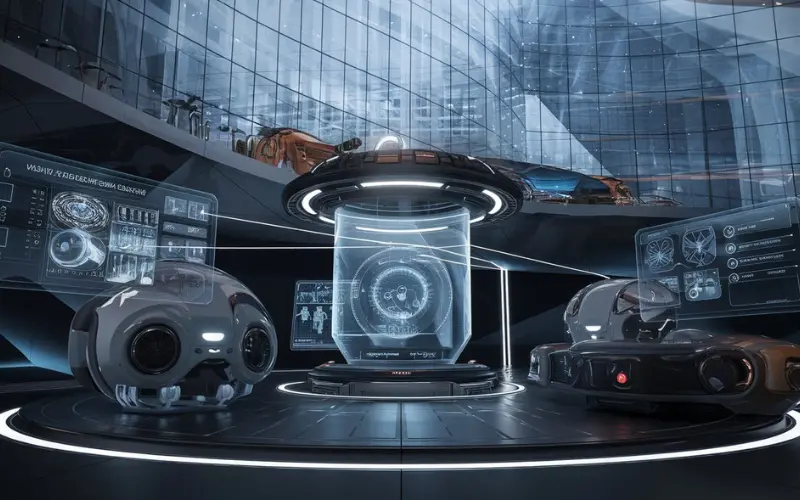Design Technologies Ultra is revolutionizing the world of creativity and innovation. It offers powerful tools and systems that streamline the design process across multiple industries. These technologies bring efficiency, precision, and speed to every project. Whether it’s product design, architecture, or digital media, Design Technologies Ultra is reshaping how creators work.
What is Design Technologies Ultra?
Design Technologies Ultra refers to advanced technological systems used to improve and refine the design process. This includes software, hardware, and integrated platforms that support high-level design projects. The goal of Design Technologies Ultra is to make design faster, more accurate, and more intuitive. These systems are particularly valuable in industries like engineering, architecture, and entertainment.
With the introduction of these technologies, designers can focus more on creativity and less on repetitive tasks. Design Technologies Ultra automates complex functions, allowing professionals to achieve better results in less time.
Benefits of Design Technologies Ultra
The benefits of Design Technologies Ultra are vast. From improving workflow to enhancing creativity, these technologies transform the design landscape. Here are some key advantages:
1. Increased Efficiency
Design Technologies Ultra speeds up the design process. Complex calculations and 3D modeling tasks are automated, allowing designers to complete projects faster. This efficiency reduces production costs and time, making businesses more competitive.
2. Precision and Accuracy
When it comes to design, precision matters. Design Technologies Ultra ensures accurate measurements and flawless details. This level of accuracy reduces the chances of errors and revisions, saving both time and resources.
3. Enhanced Collaboration
Design projects often involve multiple teams working together. Design Technologies Ultra makes collaboration easier by integrating cloud-based systems. Teams can work on the same project simultaneously, regardless of location. This leads to smoother communication and a more cohesive final product.
4. Boosted Creativity
With Design Technologies Ultra, designers can experiment with ideas more freely. These technologies take care of repetitive tasks, giving creators more time to focus on innovation. From product prototypes to virtual reality experiences, the creative possibilities are endless.
Industries Benefiting from Design Technologies Ultra
Design Technologies Ultra is impacting several industries. Here’s how different sectors are leveraging these tools:
Architecture
In architecture, Design Technologies Ultra simplifies the creation of blueprints, 3D models, and building plans. Architects use advanced tools to visualize structures before construction begins. This improves the accuracy of designs and ensures projects are completed on time.
Engineering
Engineers use Design Technologies Ultra to develop intricate machine parts, electronics, and systems. The software helps create detailed schematics and simulations. This allows engineers to test the functionality of their designs before production starts, reducing costly errors.
Entertainment
The entertainment industry uses Design Technologies Ultra in animation, video game development, and film production. These technologies make it easier to create lifelike visuals and immersive environments. From CGI in movies to 3D environments in video games, Design Technologies Ultra plays a key role in modern entertainment.
Product Design
Product designers use Design Technologies Ultra to create prototypes and models. Whether designing a new smartphone or car, these technologies make it easier to test and refine concepts. This speeds up the time it takes to bring products to market.
Emerging Technologies in Design
Design Technologies Ultra continues to evolve, with new advancements shaping the future of the design world. Some emerging technologies include:
1. Artificial Intelligence (AI)
AI is revolutionizing the design process. With AI-powered tools, designers can automate tasks such as image editing, layout generation, and data analysis. AI also assists in creating more personalized and adaptive designs.
2. Virtual Reality (VR) and Augmented Reality (AR)
VR and AR are changing how designers visualize projects. With VR, designers can create immersive 3D environments. AR overlays digital content onto the physical world, allowing designers to test products in real-world settings.
3. 3D Printing
3D printing is another game-changer in Design Technologies Ultra. Designers can create physical prototypes from digital models. This technology reduces production time and allows for more experimentation in product development.
4. Cloud-Based Design Platforms
Cloud-based platforms allow teams to collaborate on projects from anywhere in the world. These platforms store design data securely and enable real-time updates. This makes it easier for global teams to work together on large-scale projects.
Challenges of Adopting Design Technologies Ultra
While Design Technologies Ultra offers many benefits, there are challenges in adopting these technologies. Some common challenges include:
1. High Costs
Implementing Design Technologies Ultra can be expensive. The software, hardware, and training required can strain a company’s budget. Small businesses may struggle to afford these technologies without a significant return on investment.
2. Learning Curve
Designers must learn how to use these advanced technologies effectively. This learning curve can be steep, especially for those who are used to traditional design methods. However, with proper training, the benefits outweigh the challenges.
3. Integration with Existing Systems
Many companies already have established design processes. Integrating Design Technologies Ultra into these systems can be difficult. It may require a complete overhaul of existing infrastructure, which can disrupt business operations.
The Future of Design Technologies Ultra
The future of Design Technologies Ultra looks promising. As technology continues to evolve, design processes will become even more streamlined and intuitive. AI, machine learning, and automation will continue to shape the way designers work. These advancements will lead to faster project completion, better collaboration, and more innovative designs.
In the coming years, we can expect to see more integration between Design Technologies Ultra and other cutting-edge tools. For example, AI-powered design systems may become more intelligent, predicting design trends and suggesting improvements. Likewise, VR and AR will play a bigger role in the design process, allowing creators to experiment with virtual environments in real time.
Conclusion
Design Technologies Ultra is transforming industries by making the design process more efficient, accurate, and creative. Whether it’s in architecture, engineering, or product design, these technologies offer countless benefits. However, adopting Design Technologies Ultra comes with challenges, such as high costs and learning curves. Despite this, the future of design technologies is bright, with more advancements on the horizon.

